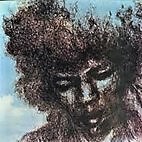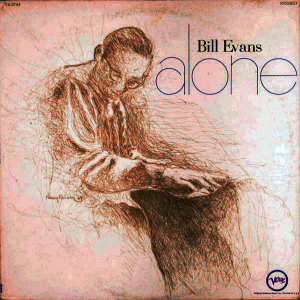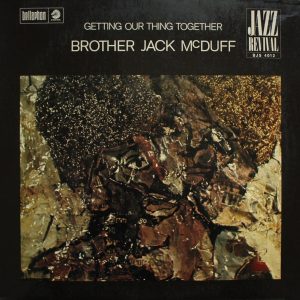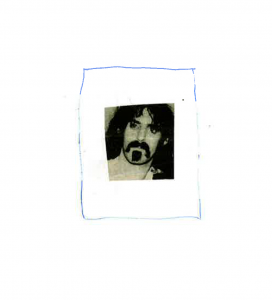When I first saw this painting (on top) in an art gallery in Morro Bay California, somehow I thought of Jimi Hendrix. At the time, my ‘bird-brained’ notion was that if Hendrix reincarnated, he would return to earth as a Raptor bird. While the painting in question is of a Jackdaw, and not a Raptor, the latter is what flashed through my mind even though a raptor is a bird that characteristically swoops down and seizes its prey.
Not Jimi’s style actually, but hey, what do I know? (hint: mostly only what I’ve learned from my half-sister). Sadly, I never met Jimi, my half-sister’s good buddy and poet-in-tandem. But it was the likeness that struck me, from a headshot POV.

Cry of Love
NO? Well OK. Fine then.
As James Audubon, the naturalist and ornithologist once said, if there is a difference between the bird, and what the field guide says, believe the bird!
I bought the painting anyway, and love it! Learn more about the artist, Rone Prinz, here. Rone’s latest turn to portraiture is a gift to the visual art world. Her nuanced interpretations of emotion in human faces are one of a kind, and wonderfully evocative. Moreover, they parallel my half sister Nancy’s propensity to sketch musicians at work. In Nancy’s own words:
Drawing musicians was a way of watching people move, according to their own music. I could hear as well as see who they were. (What I did wrong in my last few years of work was I never asked to see the performers in person. I was sent a photograph and was told to submit my work.)
In earlier years, I would initiate the whole process. The studies of the performers live, the preparation, then the finished work. It was what I wanted. The work was mixed with my desire ‘to be there.’
I was where I wanted to be and getting there was paradise.
For Nancy, the musician as person merged seamlessly with the music, and music with person. They were inseparable memes that landed on my half-sister in simultaneous, synchronous, rhythmic concatenation. Nancy’s love for Jimi was not sustained solely by his music. His human being, his person, resonated with her equally:
When Jimi arrived it was as if a dry tan sponge moisturized and expanded into colors.
Jimi played with sound from ear to ear, the way a child plays with a slinky from hand to hand.
Nancy moved around with Jimi frequently, as she tells in her memoir notes, not as a Hendrix groupie which turned her off whenever she encountered one, but as a peer. Her love for Jimi was much deeper, truer, almost parental.
My unconditional love for Jimi lasts until this day. But it was not covetous. I didn’t want him for my own, for myself. I just wanted him to be happy and treated fairly, and to be able to express himself freely and be appreciated.
I loved him deeply, understood him and if I could have helped him in anyway, I would have.
But we were peers. I couldn’t have children, but I imagined that I had close to that feeling for him, at least in part.
Jimi, Nancy observed, could see into a person’s ‘soul,’ and she apparently looked deep into his.
Jimi could see the fine points of people. He could see the fine points of a soul. How he could sometimes forget such insight is beyond me. [He wasn’t alone.]
He was my fingerprint of faces, individual to me, and to my sense of beauty. Anything trivial after that would be like a warning signal that I was alone. ‘Don’t fall in love with him,’ Mike said.
Jimi seemed like a whisper deep inside my head.
When soul departed Jimi, as Nancy looked on, not all was erased.
I saw Jimi as so beautiful, and he represented to me the face of all the emotions of the world. That’s why looking at him in his coffin was so hard for me. My knees buckled.
There was no animation there anymore. Just features. And, without words, I realized that his beauty, to me, had been his feelings, showing so transparently through his skin. The impression that I was left with was the glistening prismatic effect of his face.
Below are additional visual examples (also posted elsewhere in this blog) of how Nancy reveled simultaneously both in hearing AND seeing the musicians around her, resulting in sketches, turned into album covers.



Frank Zappa too was sketched by Nancy, though not for an album cover.  Nancy ‘got’ his soul, and so drawing him must’ve come naturally.
Nancy ‘got’ his soul, and so drawing him must’ve come naturally.
When the Mothers [of Invention] played around New York City in the winter of 1966, Gail and Frank (before they were married) used to sit on the empty dance floor of concert halls between shows and kiss and hug like little teenagers. Then Zappa would get up on stage and lead the Mothers of Invention like an ancient philosopher, a mad scientist, a comedian with a deadpan delivery, a classical artist, a Halloween pumpkin, a quiet guy who couldn’t resist saying BOO!
Nancy, through reflection, commentary, and memoir, was fascinated by the creative process.
Sometimes you’re involved in beauty you don’t understand. All you know is, it must be done. Something around you echoes back at you. And a relationship is born between you and your ideas.
You start off so grounded in everyday life that the creative ‘lift off’ is a release – a free exhilaration and pattern – new and enjoyable.
You end up so ‘out there’ that you cling to the instruments you use (paint, guitars, paper, stone, words, voice, etc.) for grounding and stability.
It seemed to me that the only thing that was really mine was my ability to draw.
Artists, in Nancy’s estimation, were put together a little differently, or at least responded to the world differently.
If, in the middle of the night, I wake up and realize, in an instant, that a certain color or shape can be added or eliminated from a painting to make it better, should I wait till morning, or get up while ‘the light’ is still flashing on my rooftop, like a siren. Get up, get up, get up and fix it.
Time and schedules and the blending of night and day, big and small, dark and light, now and later, have a different agenda for an artist.
Often when I closed my eyes while listening to music, I pictured images, like horses morphing into ocean waves, and trees embracing birds.
These are thing computers today could actually do.
Artists have POWER too!
Picasso’s “Guernica” was covered at the U.N. when Colin Powell spoke in favor of the war on Iraq. How much power did they think art had? If a painting could make a warrior feel uncomfortable, what else could the painter do?
 Dr. Cesar A. Cruz, writer and educator
Dr. Cesar A. Cruz, writer and educator
Among rock’s most powerful performances of all times is Jimi’s Star Spangled Banner, played at Woodstock:
Dropped like a bomb. Then rose in screams.
Either you got it or you didn’t. Jimi was painting Guernica.
One dot of color could lay miles of picture into place. Erasing something could make the sun come out. These nano particles of thought can wake us up at night. And push the whole rest of the world away.
The bedrock of art, its well spring, is something embedded uniquely within. Art for Nancy was inseparable from identity. One’s muse was part of one’s identity. When they split apart it was by mysterious causes and conditions, and always at considerable cost. For Nancy, the artistic through-line of one’s soul could, alas, wither and fray:
To create the beauty you envisioned. No one else can chip away at your engineering. [here on the page Nancy writes a note to herself to connect this idea to Jimi’s line, recorded in his studio album, Axis: Bold as Love: ‘I’m the one that’s got to die when it’s time for me to die, so let me live my life the way I want to.’] Whether it seems logical or valid to anyone else, they cannot pull it out from under you, or you lose so much. Time, confidence, strength, continuity and your place.
No matter how noble the voices sound as they curl around your ears, you must remember that you opened your own heart in your own way.
You get used to the feel of ideas taking residence inside you.
The curiosity and the talent doesn’t go away, but when the direct messages do, it has more to do with undivided attention becoming divided……limited ability to change with the times, another passion taking over, weariness, illness, distraction or self doubt. There are many reasons one loses ‘the touch.’
Others don’t quite realize what has happened, because the creator has become less important than the creations themselves.
After Jimi was gone, Nancy indeed struggled to find meaning in her life, and her creative muse was wounded and disarmed. She lived in, and for, the past, and clung to her chronically incomplete handwritten memoir notes everywhere she went. She seemed to not quite know what mattered to her anymore.
Jimi has the line: ‘I know what I want, but I just don’t know how to go about getting it.’ (from ‘Manic Depression’) When I heard that line I thought, I’m just the opposite. If I know what I want, I have no trouble knowing how to get it. It’s when I don’t know what I want that I have problems.
Surely these handwritten memoir notes provided an emotional link to a past Nancy desperately wanted to hold onto. My father, sister and brother — a life raft set adrift when my father refused to acknowledge his first born daughter — were not far geographically, but sadly too distant and unreachable. And so the creative muse in her was that much more pronounced because of its loneliness, but also because she shared it with a friend whose heart-mind was big enough to bring the world, in applause and appreciation, to their doorstep.
There were kids on the street who recognized Jimi and just nodded. On the day of the trial, Jimi, Mike and I walked into the courthouse. I sat between Mike and Jimi, and I’m assuming Mike was paying attention ‘cause money was at stake. But Jimi and I … we were writing poetry together. (I never saved that, much to my dismay.) There we were, like two little children, playing while the adults did business. After a trial that lasted for three days, the jury deliberated for 8 hours before returning a not guilty verdict, acquitting Hendrix of both [drug] charges.
Every society is judged in hindsight, by the creations it leaves behind. They are preserved, restored, and valued way more than the people who created them. Van Gogh was called the local lunatic in his town’s newspaper. The man who shells out 60 million dollars for one of his paintings now would never have had the man himself in his home for dinner.
Maybe Jimi reincarnated as a bird, or maybe not. If Nancy reincarnated, perhaps she was reborn a beautiful red tailed hawk, or maybe just a painting of one.
Jimi and Vella made an album for Mike in the beginning of the 70s. If Jimi Hendrix had come back as two people — a brother and a sister — he would have looked like Jimi and Vella Cameron.
